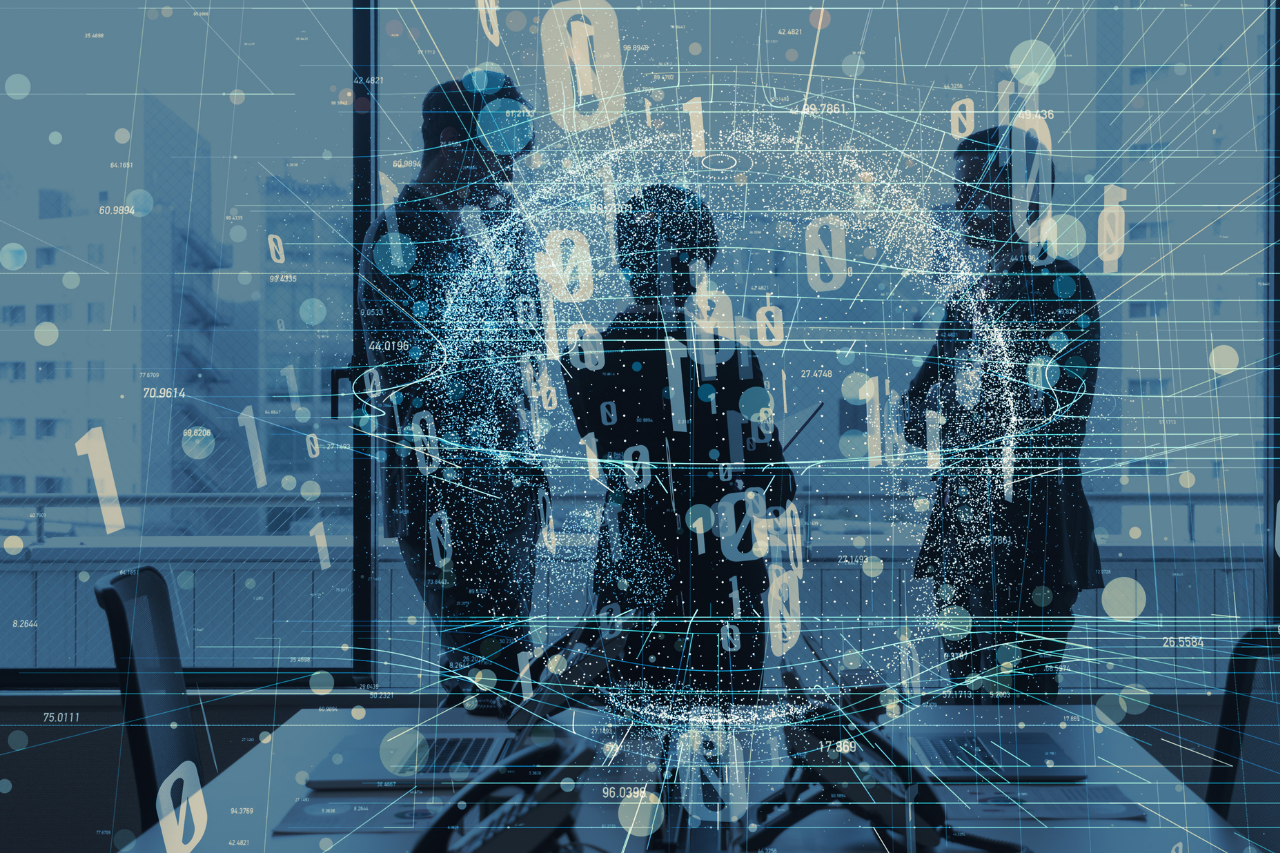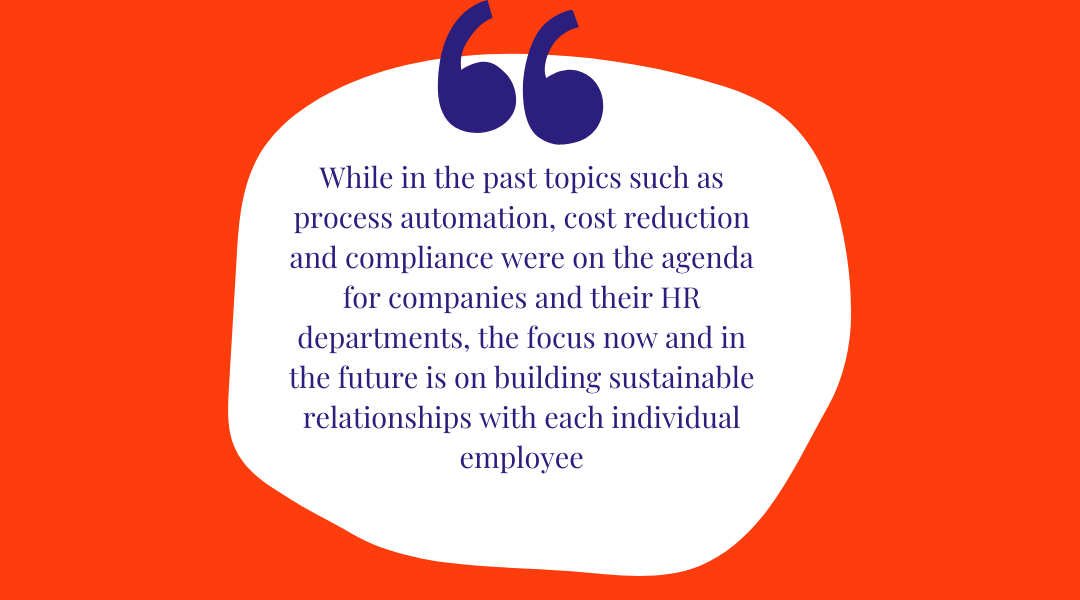Five reasons for digitalisation in HR
The modern HR department is juggling many tasks and too often administrative work can dominate an HR professional's time. Irena Szymiczek suggests five reasons why you should digitise that admin

Human resources departments play an important role in the company. You recruit new talents, introduce them to the company and are responsible for developing new and long-established employees as profitably as possible. In addition, HR managers naturally take care of payroll accounting, the creation and management of personnel files, processing of work, vacation and absenteeism of all employees and general personnel data management.
And more is required of modern HR departments. They should advise the other departments strategically, prepare company-relevant decisions and be well equipped in the 'war for talent'. Quite a lot. In addition to all of the administrative tasks, there is often simply not enough time to take care of important strategic tasks. And, the more employees in the company, the greater the administrative effort.
Digital HR processes: an inventory
This is where digitalisation in human resources comes into play. Digital processes automate and streamline manual, recurring activities and relieve the core business of the HR department. The decision-makers have already understood that. According to an HR study by the Hacket Group, 82% of executives assume that digitisation will have fundamentally positive effects in human resources, but only around 40% of those responsible consider themselves well equipped. So there is still a lack of implementation.
Companies today already often use software for time recording, personnel deployment planning or personnel controlling. However, core HR tasks such as applicant management, talent management or recruiting are still mainly done manually.
While in the past topics such as process automation, cost reduction and compliance were on the agenda for companies and their HR departments, the focus now and in the future is on building sustainable relationships with each individual employee. New forms of collaboration between companies and employees are the greatest challenges facing human resources.

Five good reasons for digitising your HR department
1: Finally do what you love
Finding a specific ID in an archive with countless shelves and folders is like looking for a needle in a haystack. Most HR employees find the constant search for and filing of documents stressful and frustrating in the long run. Managing documents that come in via email and organising data in Excel or Word documents also costs time and nerves. This delays subsequent tasks and unnecessarily lengthens processes.
When documents are not immediately available, some coordination via email and telephone is often required to get the right information. The result is that customers, partners and internal colleagues have to wait longer for answers, which can annoy them. HR employees could also better use this time for other important tasks.
All-important personnel documents are stored centrally in a digital personnel file. You can find everything related, including documents, with just a few clicks, and employees in the company can also access personnel information that has been activated for you.
You can easily connect the software for digital personnel files to any ERP system. The digital personnel file for SAP HCM from EASY SOFTWARE, for example, is seamlessly integrated into your SAP system and is based on SAP technology – you don't even need extensive training to work with the digital personnel file.
2: Look through the process jungle
Regardless of whether you use SAP as the leading HR system in your company or other ERP systems, in our experience the subject of process digitisation is still often neglected. You only start here to generate real added value for your human resources. Digitisation simply makes processes much more comprehensible and transparent for everyone. In the case of standardised tasks, software ensures less susceptibility to errors and accelerates interaction.
The creation of references, for example, is a multi-stage process that includes various stakeholders. As an HR manager, how long do you need on average to create a reference manually? In addition to the correct terminology, which has to be updated and checked again and again, the coordination between the individual stakeholders in particular eats up an enormous amount of time: creation, signature, checking, approval, etc.
A digital solution, on the other hand, automates the entire process. If an employee applies for a job reference, he sets the automated digital process in motion: The HR department receives the request and with just a few clicks, the employees compile the reference with ready-made text modules and forward it to superiors via a workflow for review and digital signature. We have calculated that the time for the creation of references can be reduced to well under an hour with digital support. In addition to the time saved, the increased transparency is a clear advantage compared to manual processes because you can view the process status at any time.
3: Don't miss any more deadlines
Digital processes bring you increased transparency in all HR processes. Why? Whether it's the checklist for the onboarding of a new employee, the preparation for the 25th anniversary of a valued colleague or the timely processing of applications: With analogue paperwork, decentralised calendars or Excel lists that your colleagues cannot access, you will miss possibly important deadlines, have to be constantly behind and even interrupt your work often so as not to forget the administrative to-dos.
However, if processes are completely digital, you will automatically be reminded of important deadlines by email. If employees ask when their certificate is ready, you can also view the process status digitally at any time and provide information immediately. With the option of digital signatures, a process is no longer idle and you meet deadlines much more easily.
4: On the safe side
The greatest concern in the personnel area is to ensure audit security, compliance and adherence to deadlines, especially when it comes to the archiving of personnel data. Personnel files in particular, which contain personal data, are subject to clearly regulated statutory provisions on retention and deletion.
Paper can fade or be lost, but digital documents stored within a DMS are protected from data loss. In addition, every change is documented and versioned so that transparency and traceability are always guaranteed. Most of the DMS are also connected to an archive system which automatically complies with retention periods. Every software for a digital personnel file should already be GDPR-ready by default. Be careful when choosing the right tools for your business.
In addition to the digital personnel file, other automated processes help you to guarantee legal security and GDPR conformity at the push of a button: Our software for digital certificate creation, for example, is already provided with legally checked text modules as standard, which are always kept up to date via updates. And in the application and onboarding process, you will be informed about deadlines for storing personal data.
5: Make your employees and managers happy with self-services
In the current situation in particular, many companies were forced to send their employees to the home office at short notice. The lack of digitised processes led to a massive drop in productivity in the first few weeks and an increased risk of compliance violations. For example, paper files are taken to the home office, internal documents are sent by post for signature, etc. Digital self-services not only help you to work efficiently from anywhere, but are also one of the keys to new freedom for HR employees and For a digital user experience, employee and manager self service, which strengthens the personal responsibility of employees and managers.
At the same time, the digitisation of the HR department with self-services means that employees and especially the younger generations Millennium and Z are demanding a new user experience with regard to HR tasks. Digital employee and manager self-service applications are becoming an important building block for the transformation to HR 4.0.
Whether applying for a vacation, ordering a company car, applying for parental leave or viewing or independently changing personal data – thanks to transparent and secure self-services, all of this becomes a win-win situation for HR managers as well as employees and executives.
Start digitising your HR department now
In summary, the digitisation of HR departments is worthwhile in many ways:
- Legal security and compliance and deadlines are simply maintained
- HR employees save time when processing administrative tasks
- Processes across various stakeholders run more efficiently and transparently, they do not stand still
- Your employees work more motivated and productive with intuitive and digital self-services
- You attract more and more suitable talent for your company
- You save storage space, paper and costs!
Nevertheless, many companies still shy away from digitisation in human resources. Many think that digitisation is expensive and complicated. In fact, the investment outlay for software solutions pays for itself within a very short time. According to a study by Kienbaum , companies spend far higher costs on manual processes, including administrative personnel work.

For more information please go to EASY Software

